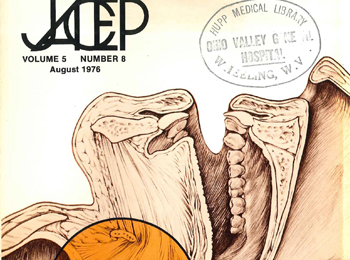
My first response on being asked to write an article on the progression of emergency airway management since ACEP was founded was that I am not that old. But actually, my career in emergency care started in 1980 as an EMT. For the thousands of residents now training in our specialty, and anyone who started after the 1980s, it’s hard to imagine how emergency medicine was practiced in the ’60s and ’70s. The pioneers of our specialty created their practice out of necessity, a consequence of emergency care being neglected by the established specialties. It took guts, especially in academic environments with political turf wars, for self-taught emergency physicians to start staking out responsibility for critical, time-sensitive procedures, including airway management.
Explore This Issue
ACEP Now: Vol 37 – No 08 – August 2018Improved Airway Devices
In hindsight, the late ’70s and ’80s were a major transitional time in airway management. The start of the decade saw the invention of the laryngeal mask airway (LMA) as well as the esophageal tracheal Combitube. These devices were a marked improvement over both mask ventilation and the EMS airway at the time, the esophageal obturator airway (EOA). The EOA was a co-esophageal blocker married to a face mask, but it still had all the deficiencies of mask ventilation. It was a good vomit directional device, but was not a significant improvement in ventilation or oxygenation over mask ventilation.
The Combitube, invented by Michael Frass, was a step forward in that it combined a pharyngeal balloon with an esophageal balloon. The seal of the airway was now within the hypopharynx. The Combitube became the default airway solution for EMS agencies, as it was easy to insert and very stable once the pharyngeal balloon was inflated. It isolated the larynx and trachea from the esophagus (and stomach contents). The Combitube has been since largely replaced by a better designed two-balloon blocking device, the King laryngeal tube (King LT).
Anesthesiology embraced an alternative means of ventilation just as the Combitube was coming into vogue with EMS. Archie Brain, MD, an anesthetist from Britain, created an intra-oral sealing device he called the LMA. This small triangular mask slid along the hard palate, down and behind the tongue, with the tip of the triangular mask wedged into the upper esophagus. Although not a complete blocker of the esophagus, the mask created an effective ventilatory seal in the hypopharynx, over the larynx. Dr. Brain’s original device and many LMA-type devices still to this day use inflatable cuffs, but it turns out that the sealing of the airway is due to the collapse of soft tissue (created by gravity and sedation, usually propofol) down onto the mask. It would take almost 20 years for this to be widely recognized; newer LMA-type devices have either very-low-volume cuffs (the i-gel, Cook air-Q, Ambu Aura, LMA Supreme) or no cuff at all. The latest generation of these devices adds gastric decompression ports, further improving safety.
Pages: 1 2 3 | Single Page





One Response to “Emergency Medicine’s 50-Year Evolution of Airway Management”
September 2, 2018
Helio Penna GuimaraesDear Prof Levitan:
Thanks a lot fir this very nice lecture ! Definitely the airway management became more effective and secure , in ER, after the Emergency Medicine specialty was establishid.